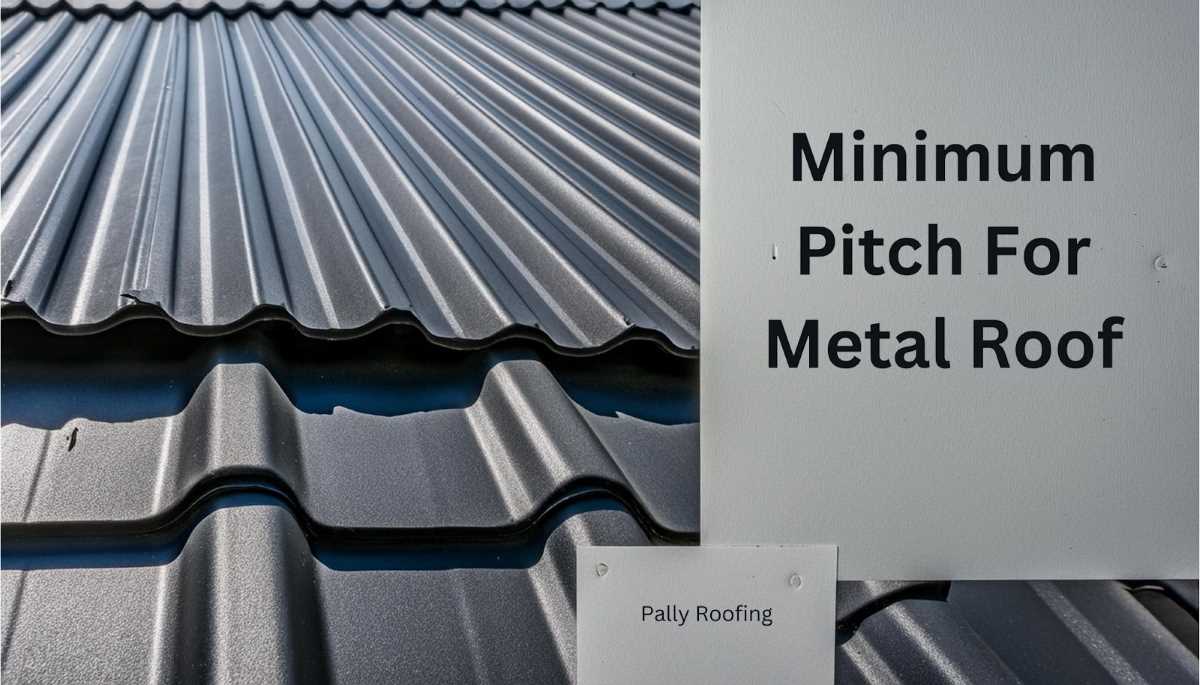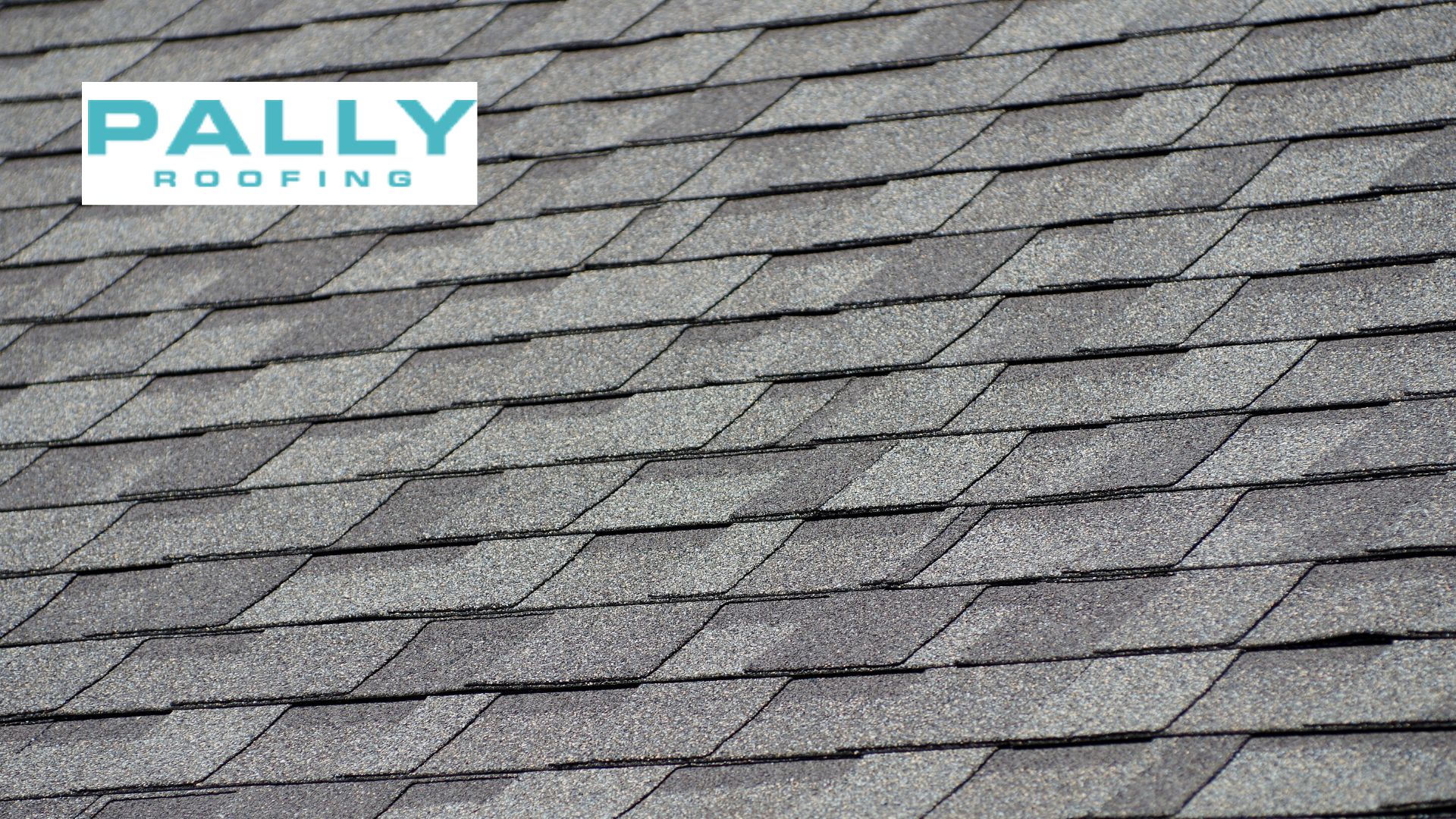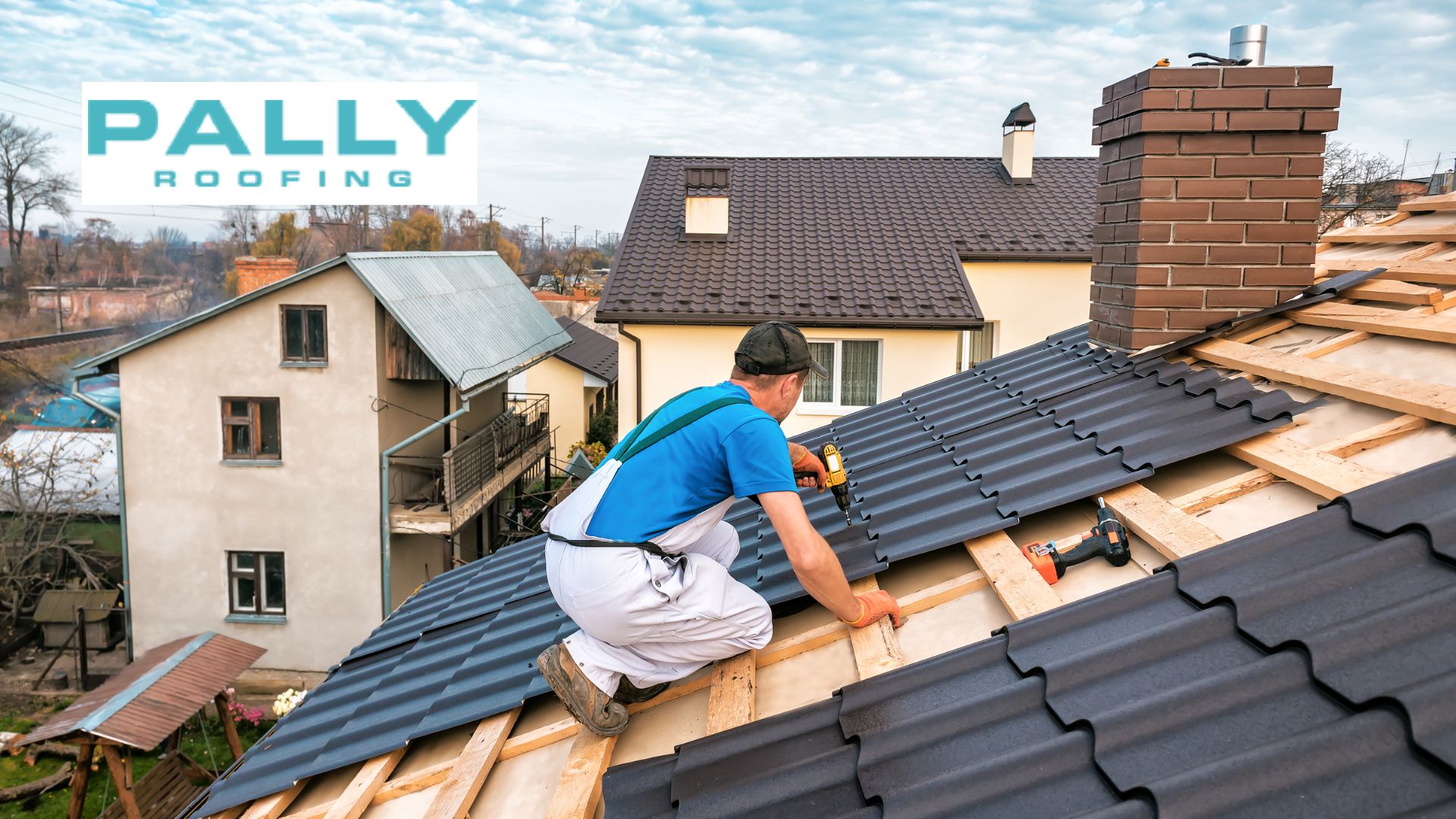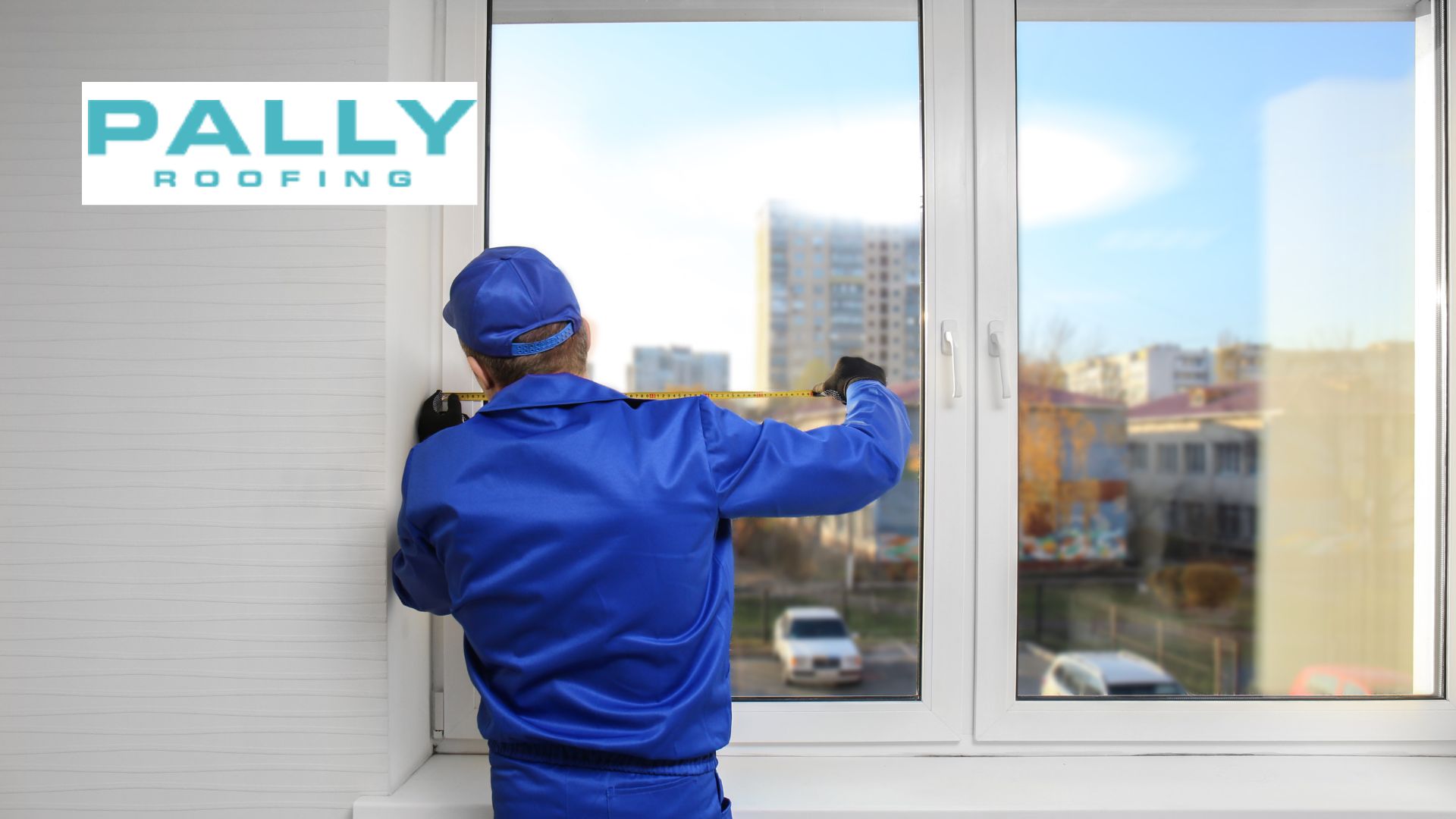Last updated on January 7th, 2025 at 05:20 pm
Welcome to Pally Roofing, your trusted roofing solution in the USA! Our expert team specializes in a range of top-tier services, including metal roofing installation, asphalt roofing installation, gutter installation, and repair. For all your roofing needs, we’re your go-to experts, committed to providing prompt and reliable service.
Table of Contents
This article addresses all your queries regarding the minimum pitch required for a metal roof. We’ll explore terms like “minimum slope,” “minimum pitch,” and “roof pitch” to ensure proper water drainage and a long-lasting roof.
Understanding Minimum Pitch for Metal Roofs with Pally Roofing
Metal roofs are fantastic choices for homeowners due to their impressive durability, longevity, and low maintenance requirements. At Pally Roofing, we’re experts in metal roof installation, ensuring your new roof performs flawlessly for years. One crucial aspect of a metal roof’s performance is the pitch or slope.
Why Minimum Pitch Matters
Proper installation is essential for a metal roof to function optimally. This includes ensuring the roof has the correct minimum pitch. A minimum pitch allows water to shed off the roof, preventing pooling and potential leaks that can damage your home efficiently.
Common Terminology
Minimum Pitch/Slope is the slightest inclination a roof can have for proper drainage. It’s typically expressed as a ratio (e.g., 3:12), signifying the vertical rise for every 12 horizontal feet.
Pitched Metal Roof: A metal roof with a slope, unlike a flat roof.
Confused about the minimum pitch for metal roof required? Don’t worry! Pally Roofing’s experienced team can assess your specific needs and local building codes to determine the optimal pitch for your new metal roof. We’ll ensure your roof is installed flawlessly, maximizing its lifespan and performance.
The 3:12 Rule: A Golden Standard for Drainage
The generally accepted minimum pitch for metal roofs is 3:12. This translates to a rise of 3 feet for every 12 horizontal feet across the roof. This angle ensures efficient shedding, preventing water from pooling and potentially causing leaks or rust.
Understanding the Nuances: Beyond the 3:12 Rule
While 3:12 is the industry standard, there are factors to consider for optimal performance:
Metal Panel Profile: Different metal panel designs have varying pitch capabilities. For instance, standing seam panels with tight seams can handle lower pitches (around 1.4:12) under specific conditions. However, guaranteeing watertightness often necessitates specialized underlayment and installation methods.
Local Building Codes: Your area’s building codes may have a steeper minimum pitch requirement than the national standard. This ensures proper drainage specific to your region’s climate. Our team maintains local building codes to ensure your metal roof meets all regulations.
Snowfall and Climate: Areas with heavier snowfall might benefit from a slightly steeper pitch to promote faster snowmelt and prevent excessive weight accumulation on the roof.
Pally Roofing: Your Partner in Metal Roof Expertise
Choosing the right pitch for your metal roof can feel overwhelming. That’s where Pally Roofing steps in! Our team of experienced professionals offers:
Expert evaluation: We’ll assess your specific roof design and chosen metal panel profile to determine the ideal pitch for optimal drainage and performance.
Building code compliance: We’ll research local building codes to ensure your roof meets all regulations and avoid potential installation issues.
Climate considerations: We’ll consider your local climate, including snowfall, to recommend the best pitch to maximize your metal roof’s functionality and lifespan.
Metal Roof Types and Minimum Pitch
Metal roofs are popular for homeowners in the USA due to their beauty and durability. However, for optimal performance, choosing the right metal panel type and ensuring the correct minimum pitch are crucial.
Metal Roof Panel Profiles and Minimum Pitch
Different metal roof panel profiles have varying capabilities regarding minimum pitch. Here’s a breakdown of some common types:
Standing Seam Metal Roof: These sleek and modern panels feature interlocking seams that create a watertight barrier. With proper underlayment and sealant application, standing seam roofs can achieve a minimum pitch as low as 1:12, as the manufacturer recommends.
Corrugated Metal Roof: This classic and affordable option features a wavy profile. For optimal drainage, corrugated metal roofs typically require a minimum pitch of 3:12. While a more straightforward design, proper installation is still essential to prevent leaks.
Understanding the Importance of Minimum Pitch
Lower pitches, while sometimes aesthetically pleasing, can hinder water drainage. This can lead to pooling water, which can cause leaks, rust, and premature roof failure.
Regarding metal roof installation, Pally Roofing goes beyond the basics. We consider several factors to recommend the optimal pitch for your project, including:
Your chosen metal panel profile: We understand the capabilities and limitations of different panel types regarding minimum pitch.
Local building codes: We’ll ensure your roof meets all local regulations, which may have steeper minimum pitch requirements than the national standard.
Your desired aesthetics: We’ll help you achieve the look you want while prioritizing proper drainage and functionality.
Conclusion
In conclusion, ensuring a metal roof’s minimum pitch is vital for long-term performance. Proper pitch allows for efficient water drainage, preventing leaks, rust, and premature roof failure. By understanding the factors influencing minimum pitch, such as panel profile and local building codes, you can make informed decisions about your metal roof project.
Contact Pally Roofing today for a free consultation. Experience the peace of mind that comes with a high-quality metal roof on your home.
FREQUENTLY ASKED QUESTIONS!
What is the minimum pitch for a metal roof?
The minimum pitch for a metal roof typically ranges from 1/4:12 to 1/2:12. However, it can vary depending on factors such as the type of metal roofing material and local building codes.
Author
-

With more than 16 years of hands-on experience, Phillip Schmucker is the knowledgeable owner of Pally Roofing. His dedication to superior roofing services has earned him a reputable place in the industry. Phillip also shares his extensive expertise through writing, providing readers with practical tips and professional advice on various roofing topics. Follow him on LinkedIn.
View all posts









